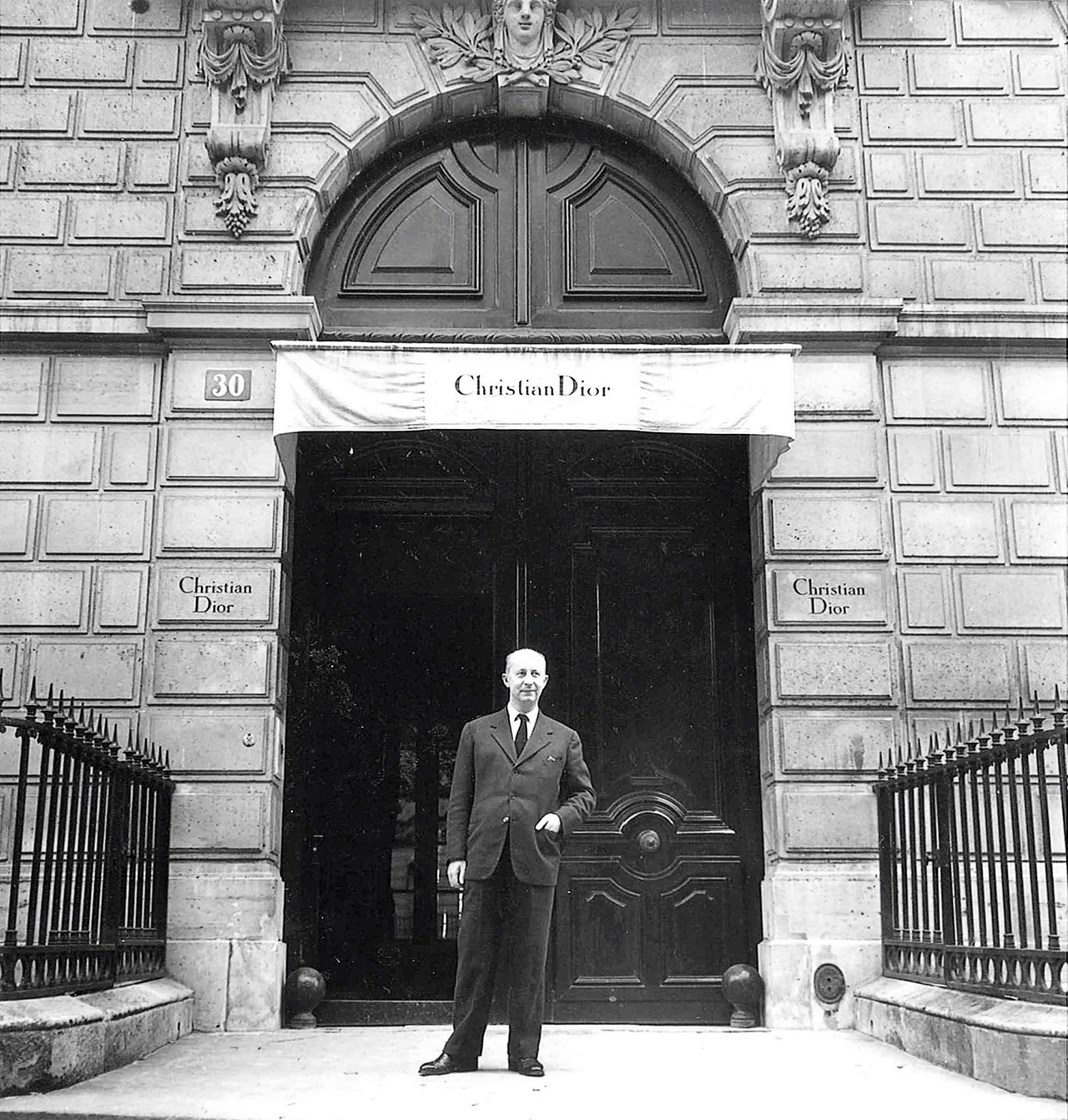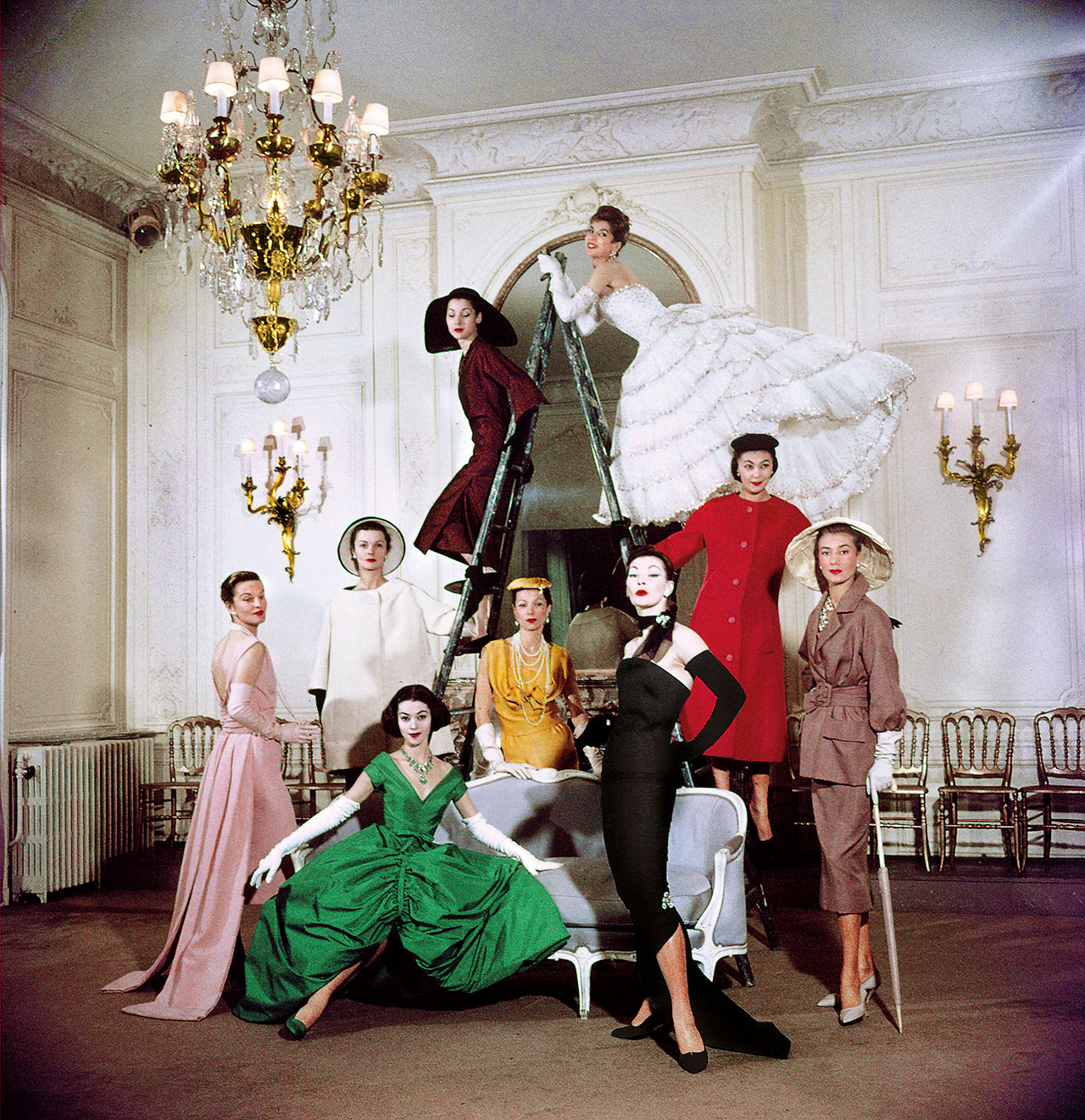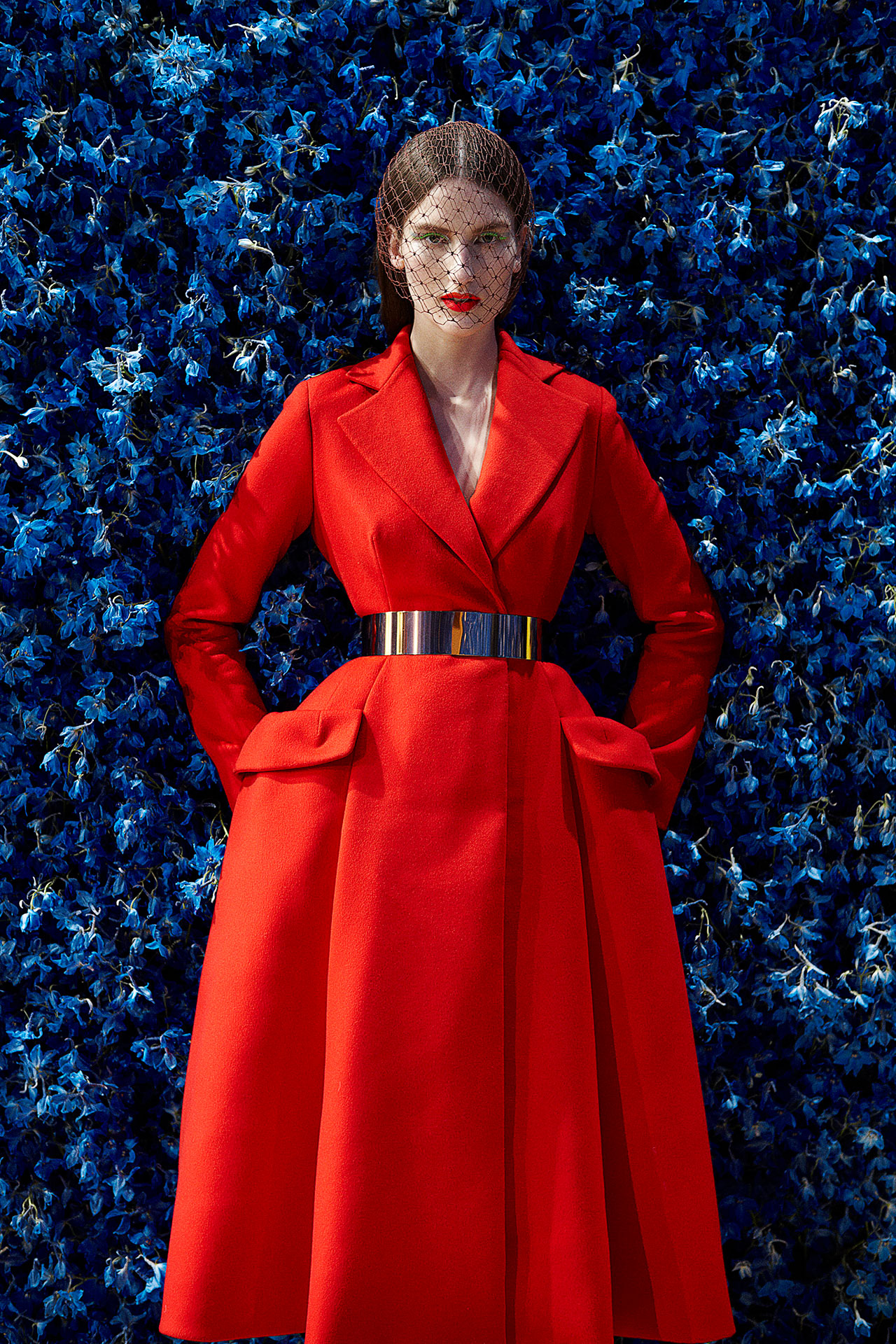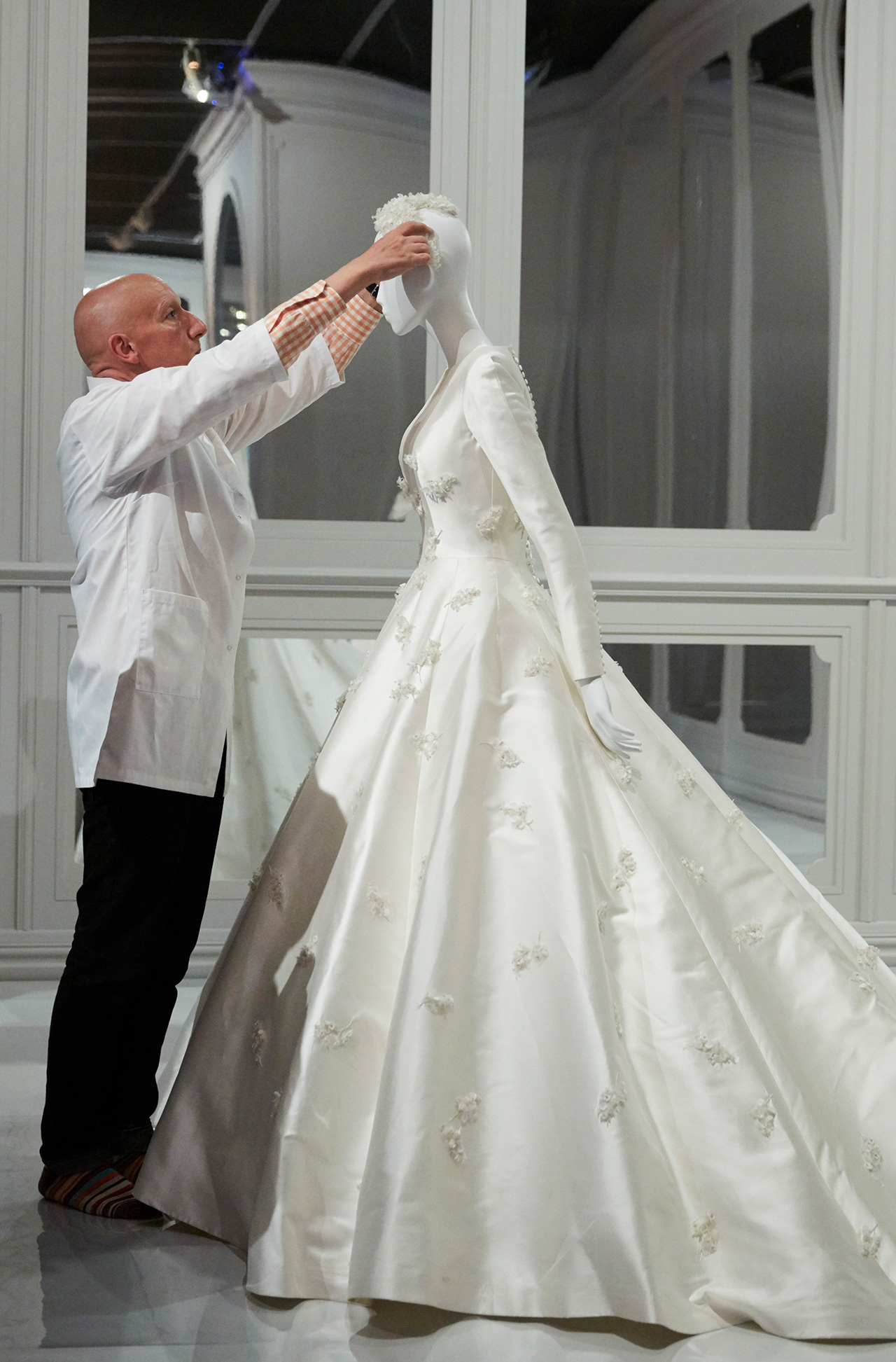News feed

Christian Dior at the House of Dior’s headquarters, 30 Avenue Montaigne, Paris
Credit: © Willy Maywald/ADAGP, Paris. Licensed by Viscopy, Sydney
When Christian Dior left the continent for the first time for a complete tour of the United States in September of 1947, he did so greatly encumbered by a heavy heart and, “of course, with a thousand absolutely essential suitcases”.
Only seven months after the designer presented his debut collection and its radical proposition for haute couture, the New Look, to international critical acclaim on February 12, he found himself boring ceaselessly toward the New World aboard the Queen Elizabeth – armed only with trepidation and erroneous impressions of life in “the real America”, something that remained a thrilling mystery hidden behind “a composite façade of skyscrapers, canyons, Niagara Falls, petrol pumps, huge dusty deserts, and something called the ‘Deep South’.
“Although I was beginning to know my role of couturier by heart,” he said, as published in his 1957 autobiography Dior by Dior, then aged 42, “I knew very little about this new stage on which I would have to play it.”
Dior was ambushed, it turns out, from the moment he arrived at customs feeling every part a fraud plagued “with all the guilt of a stowaway”, no matter how many documents he carried that established his innocence of such offences (if his reputation as a master couturier wasn’t already intimidating enough, it turns out Dior was also a supreme wit).
Before he’d even left the dock, Dior faced trial by press conference, accused by some of “wishing to conceal the sacrosanct legs of the American female”. In each corner of the country, he faced rapturous acclaim and derision in equal measure from his admirers (the family of Neiman Marcus, founder of the eponymous Dallas department store, bestowed upon the designer an ‘Oscar’ laureate for services in the field of fashion on the basis of his first collection; it the very reason for his visit) and anonymous hand-wringers whose objection of “the ‘liberated bosom’, of rounded hips, of long skirts, in short of the New Look” fell on the designer’s deaf ears. But it wasn’t until the designer reached Chicago that the depths of such feelings were made clear. On arrival in the ‘city of gangsters’ by train, the designer was greeted by “suffragette housewives brandishing placards on sticks, bearing the words: ‘Down With The New Look’, ‘Burn Monsieur Dior,’ Christian Dior, Go Home’”.

A Bar suit from Dior’s spring−summer 1947 collection, modelled by Renee, 1955, gelatin silver photograph
Credit: Willy Maywald Collection of Christian Dior Archives, Paris © Willy Maywald/ADAGP, Paris. Licensed by Viscopy, Sydney
Of course, a reaction of this extremity seems squarely at odds with the attitude we’re accustomed to seeing elicited by the house as we know it today. After all, it’s under the direction of its incumbent artistic director, the Italian designer Maria Grazia Chiuri, that empowering T-shirts emblazoned with the slogan ‘We Should All Be Feminists’ have become so deeply engrained in fashion’s current collective consciousness since her ready-to-wear debut as the first female creative director of the storied house in September last year.
It’s hard to imagine anybody receiving Chiuri’s vision for Dior, fluent as she is in the language of its founder, in the same manner that it once was (by some not all, it should go without saying) during Monsieur Dior’s first overseas jaunt. At the time, the designer’s silhouettes were perceived by a class of liberated post-War women still living in adherence with austerity measures to be retrograde in their dropping of hemlines, the cinching of waists to waspish 20-inch girths and in their invocation of the Belle Epoque through their profligate linings of cambric or taffeta. Dior maintained that such designs were a reaction to the times, however, and not at all regressive in their sentiment. “Emerging from a poverty-stricken, parsimonious era, obsessed by ration books and clothes-coupons,” he wrote, “it was only natural that my creations should take the form of a reaction against the dearth of imagination.” And while these suffragettes campaigned vociferously against the designer, it was also their husbands who feared that, were their wives to fall in love with Dior’s silhouettes, they too would have to make generous allowances for the immense yardage of fabric required to recreate his vast skirts. Some things change, some remain the same. No such cynicisms or objections existed, however, in Australia.
To hear the designer tell it, the whole world began to march in his direction following the vanguard of the critics and after the advent of his New Look. The Americans followed the English; then came the Italians, the Belgians, the Swiss and the Scandinavians. It wasn’t long before the Australians followed suit.

Christian Dior models in the salon of the House of Dior’s headquarters at 30 Avenue Montaigne, Paris, 1957
Credit: Loomis Dean, featured in LIFE Magazine, 1957 © Loomis Dean/The LIFE Picture Collection/Licensed by Getty Images
“By March, you had Australian buyers who were already travelling to Paris and adding Dior to their itineraries,” says Katie Somerville, Senior Curator of Fashion and Textiles at the National Gallery of Victoria (NGV). “This is how you have these opportunities where great Australian buyers negotiated these incredible options to bring key works to [Australian to] show from that first collection.”
In July 1947, four looks from Dior’s debut collection were included in a local presentation of French fashion. The following month, the Australian Women’s Weekly staged another parade that included, among other looks, the now iconic Bar suit. The following year, David Jones negotiated with Christian Dior Couture to bring a collection of 50 couture works to Australia to present in a series of fashion parades in Sydney and Melbourne. It’s considered the first complete Dior collection to be shown outside of Paris – a remarkable antecedent to the off-piste Resort shows now staged by the house in increasingly far-flung and headline grabbing locations, most recently the Upper Las Virgenes Canyon Open Space Preserve in Calabasas, California.
In 1957, just one month before Dior prematurely passed away, the designer finalised negotiations to bring what ended up being his final collection, Autumn/Winter 1957, to Australia to once more present it to local audiences at David Jones. This farewell tour of sorts would be presented with the benefit of being shown by seven of Dior’s faithful house mannequins – you may know them today as ‘models’ – whose exact measurements the finished garments were custom made to. One of those mannequins, Svetlana Lloyd – a Russian-born ballet dancer who, through chance, would become one of Monsieur Dior and his protégé turned successor Yves Saint Laurent’s most indispensable models – last week returned to Australia for the opening of The House of Dior: Seventy Years of Haute Couture, a never-before-seen exhibition staged in celebration of the 70th anniversary of the Maison Christian Dior exhibiting now at the NGV.
When it was first opened, Christian Dior had three workrooms in the attic of 30 Ave Montaigne in Paris’s 8th arrondissement; a studio; a salon in which to present haute couture; a cabine, or dressing room, where the mannequins would dress and have their hair and make-up done, and where, from a mezzanine level, ball gowns would be lowered over their heads; an office and six small fitting rooms. It employed a staff of 60. Today, it’s one of the world’s most prestigious couture houses, which last year turned over a reported 39.5 billion euros. Christian Dior Couture is arguably the first truly global couture powerhouse, one indebted to the decade-long reign of its founder; a modern fashion legend that, over seven decades and throughout the tenures of seven designers, has left an indelible mark not only on the world of fashion, but on commerce and couture, art and culture. It’s this legacy that the exhibition looks to celebrate in an exhaustive fashion.

Installation view of the world-premiere exhibition The House of Dior: Seventy Years of Haute Couture at the National Gallery of Victoria, Melbourne, Australia
Credit: Sean Fennessy
Somerville and her team have spent the last three and a half years intensively scouring the globe curating and sourcing loans for the exhibition, which includes more than 140 garments from Christian Dior Couture designed between 1947 and 2017. The exhibition focuses solely on the art and savoir-faire of haute couture, and draws not only on the NGV’s own collection of around 20 pieces but also from 13 other lenders – museums, clients and private collections alike – both nationally and internationally, including New York’s Metropolitan Museum of Art’s Costume Institute, the Victoria and Albert Museum in London, and that belonging to the fashion editor Hamish Bowles, whose private collection contains both early works and those from the period of Yves Saint Laurent, a titan of fashion within his own right.
Then, of course, there are the 90 or so works being drawn from Christian Dior’s new state-of-the-art archives at their avenue Montaigne headquarters, in the Hôtel Particulier chosen by Dior himself which Somerville had the honour of visiting during her curatorial process.
“Even though I was walking through that period in 2014-15, you realise it’s the same physical space that the ateliers have been located in throughout the history of the house from the very start. It gave me a sense of how much we’ve changed and yet how much certain things [and] ways of things being created remain the same.”
The exhibition hasn’t been staged as a chronological survey of the house per se, but in a semantic vein that canvasses major themes consistent throughout the history of the house and the life of its founding designer: Dior’s early life in Normandy and Paris; the four codes through which he was able to establish a distinct design vernacular, The New Look, The Line, The Flower and The 18th Century; the work of the six successors to his indomitable legacy; the world Dior created beyond the garment; and the House’s relationship to Australia, before culminating in a room that explores in exquisite detail the luxury and technical prowess of what Somerville calls “magnificent Dior” and the singular work of the couture atelier.
It is, understandably, a considerable body of work to reckon with. Shown alongside nonpareil examples of couture created by the house’s premières, petit mains, artistic directors and decades-long collaborators such as the haute cobbler Roger Vivier and the milliner Stephen Jones, are photographs, toiles, archival material from newspapers and magazines and original hand-drawn sketches that speak to Monsieur Dior’s lifelong love of harnessing the transformative powers of extraordinary tailoring to create a kind of corporeal architecture.

A bar coat from the autumn−winter 2012 haute couture collection by Raf Simons for Christian Dior features prominently in The House of Dior
Credit: © Patrick Demarchelier/Licensed by Art+Commerce
“I designed clothes for flower-like women,” Dior wrote, “with rounded shoulders, full feminine busts, and handspan waists above enormous spreading skirts. An ethereal appearance is only achieved by elaborate workmanship: in order to satisfy my love of architecture, and clear-cut design, I wanted to employ quite a different technique in fashioning my clothes, from the methods then in use – I wanted them to be constructed like buildings.”
Dior’s canny knack for construction wasn’t strictly limited to the work of the design studio, evincing itself just as clearly in the building of a house outside the walls of his avenue Montaigne atelier. As much a savvy entrepreneur as he was a master couturier, House of Dior will also expose to audiences a side to the designer that’s rarely glimpsed by those more inclined to think of Charlize Theron before Saint Laurent’s Trapeze line of Spring/Summer 1958.
“The New Look and the radical departure it was, and the great energy he brought to the fashion industry, particularly in reviving the couture industry post-War in Paris [is] only half of his story,” says Somerville. “[Dior] and the key team that worked around him were incredibly astute in taking control of the inevitably copying that goes on by developing, right from the very start really, these very clever means of licensing authorised reproductions and making it something that people were clamouring to buy the rights to be able to reproduce these designs.”
Then there’s the idea of top-to-toe Dior, the designer’s way of thinking beyond the garment and looking at all those elements – shoes, accessories, hosiery, perfume and cosmetics – that bring the whole look together, a look that by 1952 was being exported to 27 countries at a rapid rate through international licensing agreements (El Jay, a manufacturer in New Zealand, held one for more than 30 years from 1954).
“The really important parallel streams of fragrance and fashion [run through] Dior, who always spoke of himself as part perfumer, part couturier. In that same year he established the house and presented his first collection, he also started Christian Dior perfume and released that very first fragrance Miss Dior, named for his little sister.” A bottle from that first year will feature as part of the exhibition.
“So these sorts of aspects of the industry” – which have inarguably superseded haute couture as the industry’s pain et beurre – “[Dior] was right on to from a very early perspective,” Somerville continues. “Even the idea of having a boutique; it was all of those different layers that he and his team developed right from the outset, which I think, made his success so all encompassing.”

Milliner Stephen Jones installs a headpiece on a mannequin wearing Miranda Kerr’s custom haute couture wedding gown, designed by Dior’s creative director Maria Grazia Chiuri
Credit: Sean Fennessy
Naturally, The House of Dior focuses not only on its founder’s towering legacy, but the work of the six successive designers who have both inherited and built upon it, each distinct in their own right yet bound by a common thread in what Somerville sees as being their “true love and respect for the art form that is couture and the things it can do that ready-to-wear can’t”. There was, of course, Yves Saint Laurent; Marc Bohan, arguably one of the least known designers who helmed the house for just under 30 years and who strove to move toward a more wearable version of Dior; the Italian architect Gianfranco Ferré, who relished his access to the couture ateliers and “likened it to being handed a Stradivarius, the very best instrument by which you can then create your art”; John Galliano, in equal measure a fashion historian and couture futurist; Raf Simons, who reinterpreted Monsieur Dior’s silhouettes with an impeccably modern twist; and today, Maria Grazia Chiuri, who has been praised as much for her reverence of Monsieur Dior’s archives as those of her predecessors.
One section in the exhibition in particular will focus on a red cashmere Bar coat from Simons’s first Autumn/Winter collection for the house, exploring its creation from concept to completion. In the first and final weeks of the exhibition, the same room will house two artisans from the atelier who’ll recreate on a dressmaker mannequin a Bar jacket from the Spring 1947 collection. It’s an attempt, Somerville says, to demystify “what true couture equates to”. To witness the creation of the garment in the flesh is a feat as astonishing as seeing pieces from these venerable archives in their completed states.
It’s that distinction that Somerville hopes audiences will ultimately take away from this jubilee exhibition; an appreciation and understanding what makes haute couture extraordinary, a thriving and relevant art form distinct from prêt-à-porter, that “brings together the very best designers, materials, technicians, crafts people and the ateliers. It’s that pinnacle moment.” Not only that, but a great deal of pride in the very strong and early relationship between Dior and Australia, a greater insight into the designer’s life and work and that of those tasked with the unenviable work of following in his wake.
“When you think of the Dior story in contemporary terms, imagine any new designer opening their fashion house and, within that first year, Australia was part of that success story of worldwide dissemination at the power of base silhouettes and the transformation of making that fashion story so exciting and relevant again. I think Australia can feel really proud of that.”
The House of Dior: Seventy Years of Haute Couture is exhibition at NGV International until November 7, 2017
Tile and cover image: Inside the ateliers of the House of Dior, 2012 © Pol Baril










